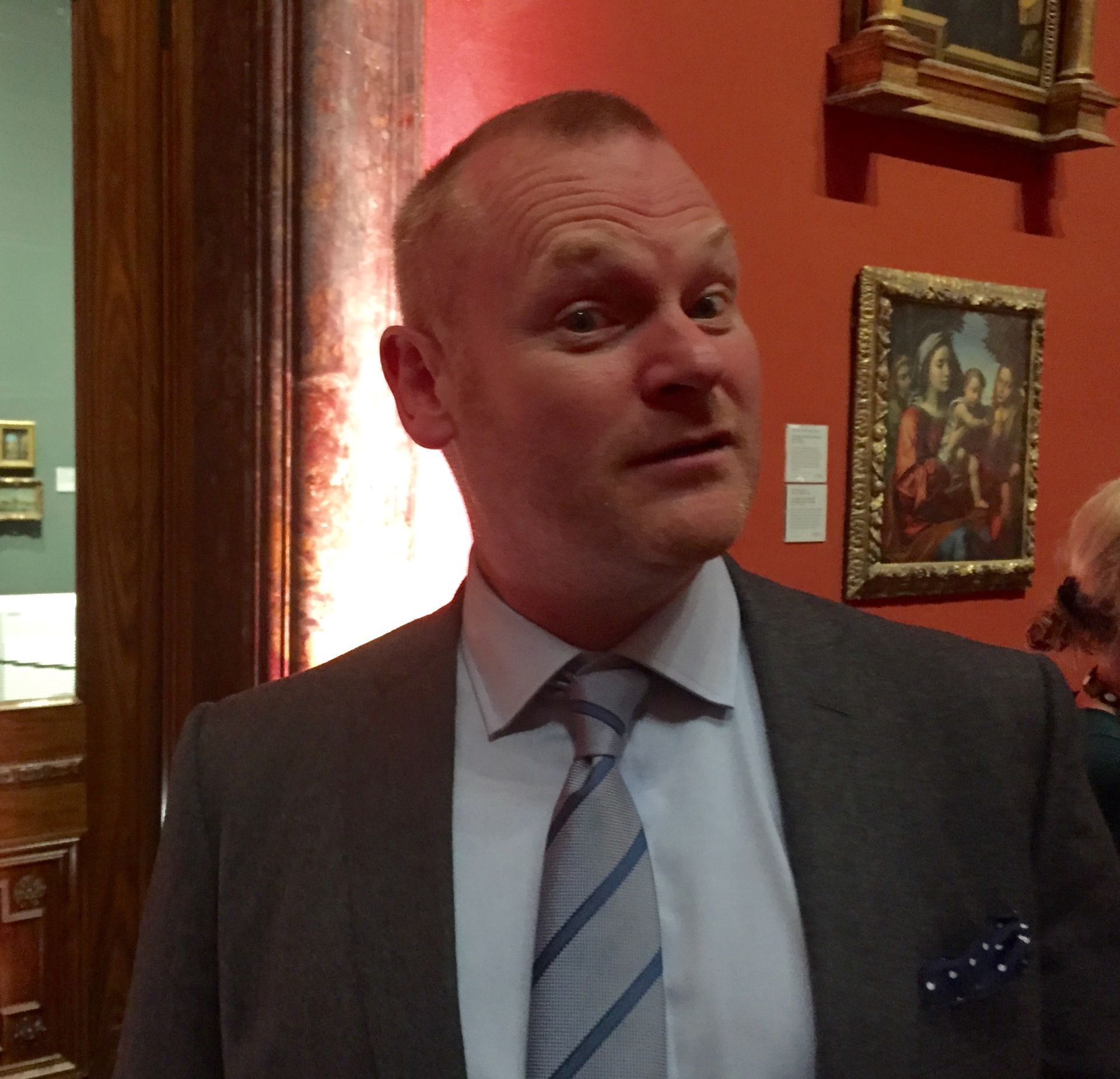Speaking at last night’s (10 May) unveiling of his glum but atmospherically-charged woodland scenes—made in response to the leafy backdrops of the National Gallery’s scenes of myth and martyrdom—George Shaw revealed how the anxiety-inducing weight of art history had caused him to “retreat into the woodland of my childhood.”
In a sporting metaphor mash-up he also described taking on the mantle of the gallery’s associate artist as being “a bit like playing for England… you put on your boxing gloves and fight the dead.”
But in comparison to the gallery’s previous associate artist, Michael Landy, who had barely set foot in the place prior to his appointment, Shaw confirmed himself to be a National Gallery aficionado. He would make regular day trips down from Coventry to London throughout his childhood, and credits the gallery as his “basis for being an artist.” Indeed, such was the teenage Shaw’s unlikely love of its Old Masters that in the early 1980s, his mother—who was among last night’s private view crowd—had bought him the illustrated Thames & Hudson guide to the National Gallery as a birthday present. Although a few decades later Shaw declared that “as a 14 year old artist from Coventry it was probably the best and worst place to start.”

Nonetheless, after two years of sparring with the greats of art history, the gallery’s latest incumbent now declares that he draws deeply personal parallels between the discarded robes and strewn wine flagons in works such as Nicholas Poussin’s The Triumph of Pan (1636), and the porn mags, plastic sheeting and Carlsberg Export of Coventry, circa 1979.
Whether Poussin’s oils or Shaw’s Humbrol enamels, each deal with the erotic charge of the leafy setting and the role of woodland as a place in which life-and-death dramas unfold. “In many ways it is the same thing, they are all talking about the serious business of making art and the serious business of living and dying—these artists were all contemporary artists once”, Shaw says. As the only actual human figure in Shaw’s works is a self-portrait of the artist relieving himself against a tree, the subtext is certainly back to (human) nature, indeed.


